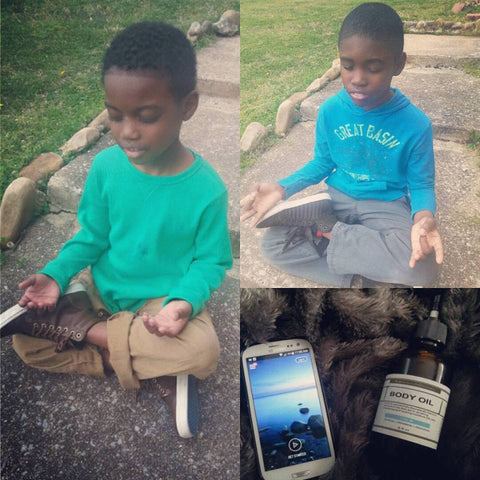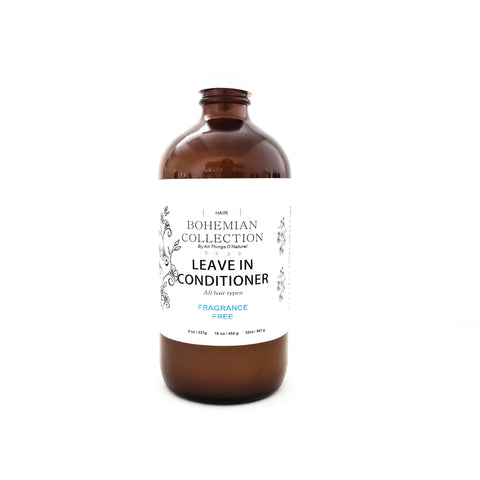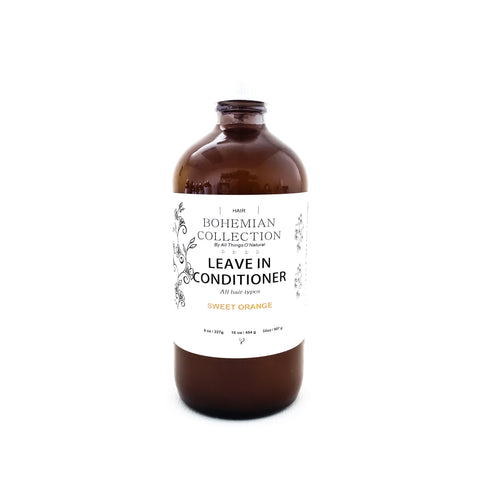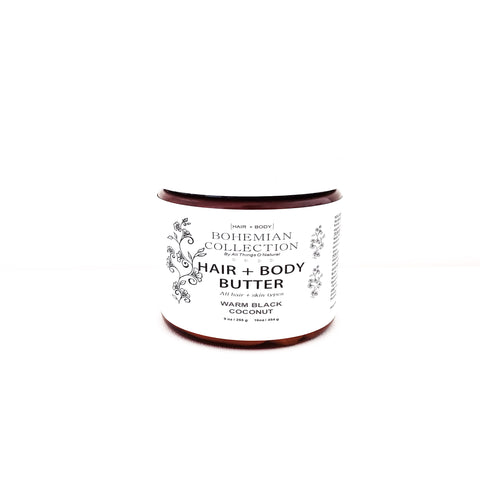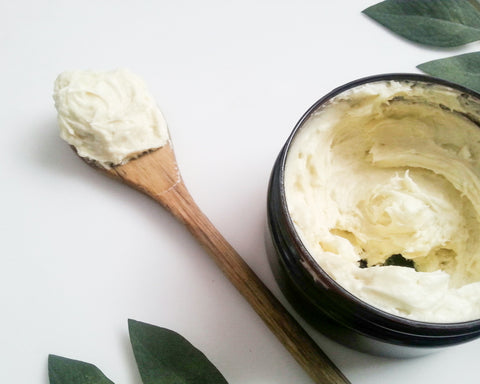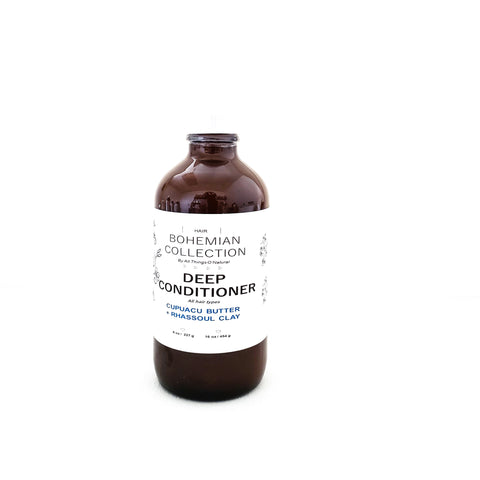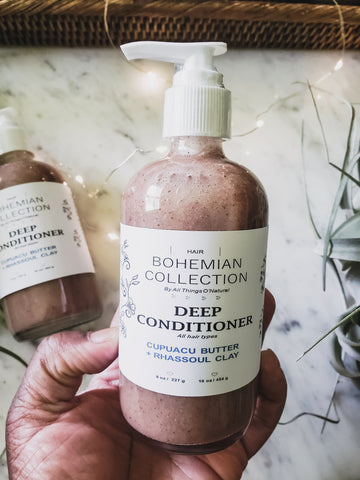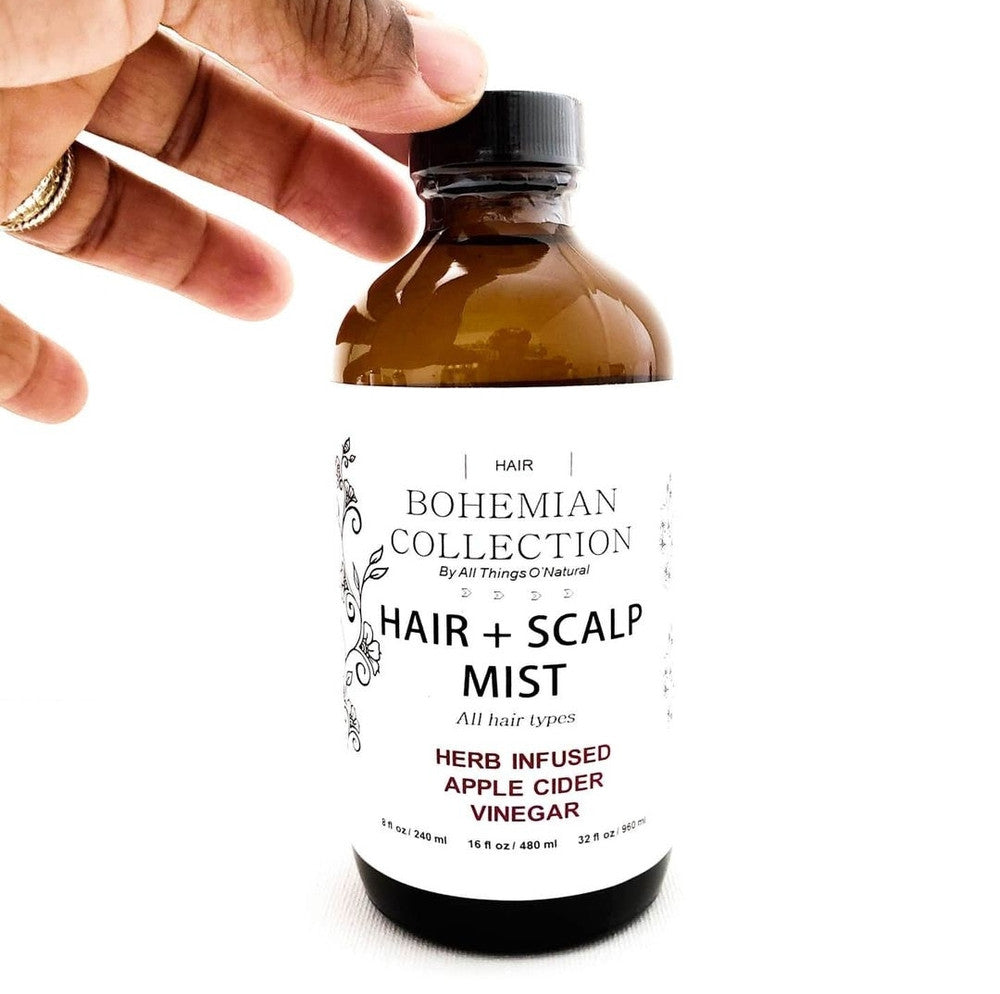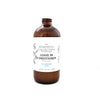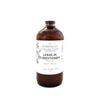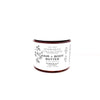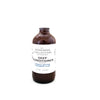By Dominique Harris
on June 20, 2017
With 1 comments

During my journey of embracing my natural texture back in 2010, I've used heat all of 3-4 times and took extreme precautions when I did so to prevent heat damage. What is heat damage? Heat damage is when the protein bond in the hair has been permanently damaged due to either, heat or chemicals such as colorants, dyes, relaxers or texturizers. Because the protein bond has been damaged, it is irreversible damage, so the best method, should this occur, is not to beat yourself up as hair will always grow back and either gradually trim the damaged hair (as in transitioning from relaxed to natural), or clip the damage all at once. I've blogged a few times on using heat to help with preventing heat damage, especially if you are choosing to apply heat to your own hair yourself...hey, I'm with ya, a stylist hasn't touched my tresses in over 8 years now.
At the present time, I am on a loc journey and have been for almost a year now, but I do have many social media supporters and customers who enjoy a little heat from time to time and I love to help share any information that will aid in keeping those tresses healthy.
MY HEAT DAMAGE FREE REGIMEN

STEP 1: Cleanse, cleanse, cleanse the hair. Applying heat to unclean hair increases the risk of heat damage due to the buildup, oil and dirt that's on the hair, so be sure to clean it. Try to avoid shampoos that contain sulfates (harsh foaming agents that are drying to the hair). Here's what I use: DUDU OSUM SHAMPOO
STEP 2: Deep Condition the hair as it improves the moisture and elasticity of the hair. Be sure to rinse the deep conditioner thoroughly to prevent buildup creating a 'smoky' atmosphere when straightening the hair. Here's what I use, NOURISHING DEEP CONDITIONER
STEP 3: Moisturize the hair to aid in protecting the hair against so much heat. Here's what I use: NATTY MOIST LEAVE IN CONDITIONER
STEP 4: Apply a sealant to the hair to help minimize exposure to so much heat, aiding in drying out the hair and causing heat damage. Here's what I use as a heat protectant and sealant, NATTY BUTTER HAIR + BODY BUTTER
STEP 5: Ok, so this is completely optional. I place my hair into two strand twists to allow to dry to at least 75-80%. This lessens how much heat needed from the blow dryer. TIP: Blow drying on sopping wet hair aids in using much more heat than needed.
STEP 6: Once my hair is 75-80% dry, working one twist at a time, I untwist then use a brush such as a denman brush to comb out the curls from the twists, then I apply very little NATTY BUTTER HAIR + BODY BUTTER as a heat protectant. Holding the blow dryer 4-5" inches away from my hair or use a dryer with a comb attachment...if you do not have one, gently glide a comb downward as you are blowdrying the hair. Optional, with a temperature setting no higher than 375 degrees (TIP: hair will burn and be exposed to possible heat damage at temperatures of 450 degrees or more), I slowly work my flat iron from root to ends. I do this until I have applied heat to all of the hair that was in twists.

My hair in twists prior to using heat My hair after applying heat
SOME HELPFUL TIPS:
When using heat, I do not strive for bone straight, as I do not want to risk damage. My hair is very thick, so this took about 3-1/2 - 4 hours to do as I took my time so as not to rush. I also trimmed each section as I straightened. As I mentioned earlier, I've used heat 4 times since I did my big chop in 2010 and my hair has thrived with very minimal heat, healthy diet, good water intake, protective styling and healthy products. For more information on the DO'S and DONT'S of using heat, click the link HERE
For details on my Healthy Hair Regimen throughout my journey, check out the blog post HERE
As always, I hope this helps
By Dominique Harris
on June 17, 2017
With 2 comments
ORGANIC...SMORGANIC..Let's talk about it!
Being a handcrafter of apothecary products that include natural, organic and wildcrafted ingredients, I receive a ton of questions regarding the scoop on organic ingredients and why they are so expensive. So, I thought, hmmm, what better way to try to explain the scoop on organic than a blog post, yay! In terms of our ingredients, look for the (*) next to any ingredient, which symbolizes an 'organic ingredient'.
WHAT QUALIFIES AN INGREDIENT AS ORGANIC?
According to the USDA, organic ingredients must be 95% free of synthetic additives like pesticides, chemical fertilizers and dyes. Organic is the most heavily regulated food system. The ingredients also must not be processed using industrial solvents, irradiation, or genetic engineering (GMO). Fact, just because an ingredient is 'natural' does not qualify it as 'organic'. So..to sum up organic vs. natural , here's a list via www.organicitsworthit.org
WHY ARE ORGANIC INGREDIENTS, FOODS AND PRODUCTS MORE EXPENSIVE?
Sarah Villafranco of Osmia Organics said it best, "Organic food and products cost more because they're harder to grow and harder to make....simply put. There's a fee associated with becoming certified organic, but there's more to it. Organic farmers have lower crop yields and smaller crops, and have to manage pests with very time consuming, natural methods like crop rotation, inter planting and the use of lady bugs (a gardeners dream bug) rather than spraying a plant with toxic pesticides."
Converting land to organic status is a three-year process. There is a two-year conversion process consisting of building up the fertility of the land. Produce grown in the first year cannot be stated as organic. In the second year produce may be stated as “In Conversion”. It is not until the third year that produce may be stated as fully organic. Soil and natural fertility building are important parts of organic farming. The farming practices are environmentally friendly, but the non use of harsh chemicals make the crops more volatile. Animal meat considered organic must contain 95 - 100% organic materials, therefore, synthetic additives and antibiotics cannot be added to the animal feed. So cleaner, healthier meat products and lower risks of exposure to carcinogenic ingredients. As a product maker, I can tell you that the costs of organic raw materials are expensive, bottom line, especially when they are from great reliable sources who have met certifications such as Oregon Tilthe (OTCO), USDA Certified, Forest Grown, Fair For Life and others... When the cost of 'organic' is higher, consider these facts as well (via organic.org) :
-
Organic farmers don’t receive federal subsidies like conventional farmers do. Therefore, the price of organic food reflects the true cost of growing.
-
The price of conventional food does not reflect the cost of environmental cleanups that we pay for through our tax dollars.
-
Organic farming is more labor and management intensive.
-
Organic farms are usually smaller than conventional farms and so do not benefit from the economies of scale that larger growers get.
HOW CAN I TELL IF SOMETHING IS ORGANIC?
-
The USDA has identified for three categories of labeling organic products:
-
100% Organic: Made with 100% organic ingredients
-
Organic: Made with at least 95% organic ingredients
-
Made With Organic Ingredients: Made with a minimum of 70% organic ingredients with strict restrictions on the remaining 30% including no GMOs (genetically modified organisms)
-
Products with less than 70% organic ingredients may list organically produced ingredients on the side panel of the package, but may not make any organic claims on the front of the package. (vis organic.org)
WHAT ARE SOME OF THE BENEFITS?
Well, one of the main benefits is the fact that you lessen your exposure to potentially harmful chemicals such as pesticides, harsh solvents and dyes..many which have been linked to cancer. So, in essence, you are paying a little more for cleaner, healthier food and ingredients for your whole self.
HOW CAN I ENJOY ORGANIC LIVING AT LOWER COSTS?
Well, for one, try cooking at home more and incorporating plants into the diet. Eating out is expensive, period, and most times, the ingredients used in restaurants are not stellar. If you don't have access to organic often, try to eat plenty of fresh fruit and vegetables and use a great cleaner to try to remove the pesticides, such as: soaking produce in distilled white vinegar, a soak using pure African Black Soap or we love the Environne Cleaner. Also, you can make some amazing household cleaning products with simple ingredients such as: Baking Soda, Distilled White Vinegar and Lemon, throw in a few essential oils that are great for keeping in your pantry such as Tea Tree Oil, Lemon Essential Oil, Sweet Orange Essential Oil, Lavender Essential Oil (this is also an amazing oil to apply directly to burns or cuts) and/or Peppermint Essential Oil..Doctor Bronners does an amazing job at cleaning counters, carpet, upholstery, tubs and the whole body..in one bottle. You can make your own healthy deodorant by combining baking soda and organic coconut oil, add a few drops of sage, lavender and/or tea tree essential oils and voila! Make your own bath salts for a relaxing soothing bath. Make your own body oils using high quality oils such as: Safflower, Sweet Almond and Olive Oil, drop in a capsule full of vitamin e (1%) and voila! Organic living can be just as frugal as conventional living when you get familiar and creative with ingredients...and, it's quite empowering and fun to make your own healthy living goodies! So, how bout' it..ready to indulge in the 'organic' lifestyle? As always, I hope this helps.
By Dominique Harris
on April 10, 2017
With 1 comments

So, let's talk about the beauty and benefits of 'brushing'. No, not your hair, not your teeth, but your skin..yes, your skin. Did you know there are actual benefits of brushing your largest organ? Well, there are and I'm about to indulge your brain as to the amazing benefits of this ancient holistic practice..let's go!
If you've followed my social media pages; facebook , Instagram and/or Twitter, you may have heard me mention the holistic practice of dry brushing in years past posts. As anyone who knows me (personally and cyber-ly) knows that I love anything that is calming, relaxing, holistic and meditative. This soothing practice is not only enjoyed in spas, but can also be enjoyed right in the comfort of your home..spa. If you have heard of dry brushing, you have heard that when doing this practice, you should brush towards the heart..but, there is actually much more to it than that. But, let's talk about some of the benefits of this practice.
DRY BRUSHING BENEFITS:
LYMPHATIC SUPPORT and DETOXIFICATION: Though it is not spoken about much, our lymphatic system is a MAJOR part of our body's immune system. Made up of lymph nodes, ducts, vessels, and organs, it is the system responsible for eliminating cellular waste products. The lymphatic tubules allow waste to be collected from your tissues and transported to your blood for elimination, known as lymphatic drainage. When this important system is not working properly, waste and toxins can build up in turn making you sick. Lymphatic congestion is a major factor leading to inflammation and disease. By stimulating your lymphatic system and helping it release toxins, dry skin brushing is a powerhouse detoxification aid. Think of it like this..the blood system brings in the groceries, the lymphatic system takes 'out' the trash. Note: some may experience slight sickness when detoxing so be especially certain to fill the body with whole foods such as organic fruits, vegatables and lots and lots of water)
EXFOLIATION: Due to the movement and bristles of the brush, dry brushing aids in removing dead dry skin. Not only does this improve our skin's appearance, clears clogged pores and allows our skin to breathe (be sure if using a brush on the face, it is a softer bristle brush), it also aids in minimizing the effects that dust mites bring as they feed off of dead skin cells. Check out how JannyOrganically reduced her allergies by dry skin brushing..amazing, right!
RELIEVES STRESS: The act of dry brushing can be extremely meditative. The practice of dry brushing aids in reducing muscle tension, calming your mind which leads to relieving stress.
IMPROVES DIGESTION and KIDNEY FUNCION: Not only does dry brushing aid in elimating toxins, it goes deeper as it aids in supporting our digestive and organ functions. Many naturopathic doctors use dry brushing to help with bloating because massaging the lymph nodes helps the body shed excess water and toxins. I also found that castor oil packs do an amazing job of improving digestion and eliminating toxins from the body (I'll create a later post about the benefits of Castor Oil Packs). Dry brushing encourages the elimination of metabolic wastes which increases circulation to your skin.
REDUCES CELLULITE: Now, keep in mind, each person's body is different, so results may vary..but here is a little information as to how dry brushing has helped rid the body of cellulite. How dry brushing aids in potentially reducing cellulite is that it helps to soften hard fat deposits below the skin while distributing fat deposits more evenly. Dry brushing may also aid in removing toxins that break down connective tissue, though some believe the effect is temporary, mostly as a result of the skin becoming more plump and swollen after brushing.
HOW TO..DRY BRUSH THE CORRECT WAY
Now that we've chatted a bit about some of the benefits, let's indulge in how to dry brush the proper way. A great video that I found to be extremely useful was this DRY BRUSHING video after researching and reading and viewing so much information on dry brushing methods.
FIRST: Set aside 5-10 minutes of self care time and Seek out a quiet spot where you can really get into the moment...You could also simply hop in the shower and dry brush in the shower (water off) and afterwards enjoy a nice shower that rinses the dead skin down the drain and you nice and clean. Note: This practice may drain you a bit, so if you must return to work or have a busy schedule afterwards, wait until the evening to do dry brushing.

SECOND: Grab your high quality dry brush, I got my gal from GoodJuJu Herbal via Etsy. I loved the price and the fact that the bristles are natural vs. boar's hair. This one does not come with a handle, but I have been able to do what I need to do without one and I'm very very gentle on my facial area. You can also find them on Amazon, like the one HERE and one specifically for the face HERE...check the reviews. The bristles should be a little stiff, but not sand paper rough.

THIRD: Watch THIS video for the in depth how to. You can brush your entire body, however, be sure to avoid areas of exposed wounds, abrasions, vericose veins or open sores.

FOURTH: Take a nice shower and slather on some of our CALM Body Oil, teehee, while your skin is still wet to lock in the moisture from your shower.

FIFTH: Drink plenty of water..Remember, you just did a detox, so refuel...green smoothies are great as well.
Repeat daily, if possible, for the best results.
My experience thus far has been that of smooth skin, though I exfoliate quite often using our products...but, my digestion has been even better and my skin feels tighter,. It can be quite addictive as any self care method can, but that's a great thing. Have you tried dry brushing? Feel Free to share your experience.
By Dominique Harris
on March 08, 2017
With 0 comments

Comfrey, an amazing herb that has been long used throughout history to heal wounds. The name 'Comfrey' in fact, comes from the Latin word 'confera' which means 'knitting together'. In fact, during ancient times, Comfrey baths were popular before marriage to repair the hymen and thus restoring virginity. Since 400 BCE, Greek physicians have used Comfrey to stop bleeding, treat bronchial problems, heal wounds and mend broken bones. This incredibly soothing herb has the ability to help repair and rejuvenate skin to bring out a youthful glow. As an herb of folklore, Comfrey root sachets are used by wandering travelers with the belief that it protects against theft.
We absolutely love the benefits of Comfrey. High in vitamins and minerals, it aids in protecting the skin from harmful bacteria, moisturizing and promotes rapid skin cell growth. You can find it in our Fields of Glory Herbal Steam Blend.
Key Components
-
Calcium, Potassium, Phosphorous, Vitamins A, B123, C and proteins
-
Allantoin ( a substance that fosters the growth of new cells)
-
Mucilage (a gummy substance that soothes inflamed tissues)
-
Rosemarinic Acid (an anti-inflammatory)
Natural Remedies Using Comfrey
-
Poultices made from fresh leaves can be applied to rough skin, aching joints, sores, burns, cuts, sprains and to reduce the swelling around fractures.
-
Poultices from the root are ground into a powder, add a little distilled or filtered water, aloe vera or organic oil, to make a paste and apply to stubborn wounds and bleeding hemorrhoids.
-
Creams are used for bone and muscle damage
-
Infused Oils are used on arthritic joints, bruises, sprains, other traumatic injuries and for inflamed bunions. (Add up to half full with fresh (be sure the fresh leaves or roots are dry) or dried Comfrey, fill clean jar of herb with organic olive oil and keep in cool dry area for 4 to 6 weeks. Strain and add herbal oil to a dark container and enjoy as needed)
-
Tinctures made from Comfrey Root can be applied undiluted to acne
Benefits of Comfrey
-
Astringent
-
Anti-Inflammatory
-
Cell Proliferator
-
Aids in Healing wounds, bone and cartilage
-
Demulcent
-
Aids in soothing acne
-
Useful for arthritis
By Dominique Harris
on October 27, 2016
With 1 comments

As annoying as it can be, skin congestion is quite a common thing. Contrary to popular belief, congestion is linked internally and has much to do with how our bodies are expelling toxins daily. When our bodies are not expelling toxins daily and properly, these toxins will be released through our largest organ, the skin, causing or contributing to acne or breakouts. It is very important to be mindful of how often we are expelling, daily or a few times per day is great. Our liver, the toxin warrior, if under stress, it will be unable to detoxify the blood, which will cause these toxins to be eliminated through the skin.
WHAT STRESSES THE LIVER?
-
CAFFEINE
-
EXCESSIVE ALCOHOL
-
DRUGS
-
MEDICATION
-
STRESS
-
HORMONE IMBALANCE
WHAT CAN AID THE LIVER IN DETOXIFICATION?
Of course, trimming back on the things mentioned above, as well as herbal teas such as; DANDELION
WHAT CONTRIBUTES TO CLOGGED SKIN?
Well, besides our bodies not properly expelling toxins, here are some additional things that can cause/contribute to clogged skin. Once the pores become clogged, the skin's function of breathing or exchange of carbon dioxide is hindered, making oil, waste by products difficult to secrete. Due to the blockage, moisture cannot be absorbed, causing products intended to infuse moisture impossible to do so. The acid mantle, the thin protective layer of the skin, is also compromised, resulting in black heads, whiteheads and/or acne.
-
DEHYDRATED SKIN
-
IMPROPER and EXCESSIVE CLEANSING
-
EXCESSIVE OIL PRODUCTION
-
EXCESSIVE BUILDUP OF DEAD SKIN CELLS
-
HORMONES (I remember extreme breakouts after having my babies)
-
EXCESSIVE SWEATING
-
DIRTY ENVIRONMENTS
-
DIRTY HANDS/FINGERS TOUCHING THE FACE
-
MAKEUP (particulary those that may contain petro products and talcum)
-
DIET HIGH IN SUGAR
-
ALLERGIC REACTIONS
WHAT CAN HELP UNCLOG PORES?
-
DIETARY CHANGES (Minimizing the cause foods and drinks mentioned above)
-
MINIMIZING STRESS
-
PROPERLY HYDRATING THE SKN: internal hydration with good water intake is great, in addition to external hydration, and this may be needed a few times per day to begin seeing results. For example, applying a moisturizer, toner mist with a serum a few times per day may help keep the skin hydrated.
-
PROPER DEEP PORE CLEANSING: Even though you take the time to hydrate the skin, if all of the buildup and residue is not removed from the skin (sometimes twice per day) and definitely before a treatment such as a mask or exfoliate, the pores are still susceptible to becoming clogged. This makes those wonderful cleansers that you thought were working,are/were only half working. Anything left on the skin that is not thoroughly cleansed is sealed deeper within the pores as you layer your finishing products such as, moisturizers, serums and beauty balms. Some deep pore cleansing practices are: manual exfoliates, chemical exfoliates, enzyme masks and herbal steam treatments.
-
PROPER EXFOLIATION
The magnificence of the skin is that it exfoliates naturally, shedding millions of dead skin cells daily. Every 28 days, the top layer of skin is sloughed off and replaced by new cells. As we age and become exposed to environmental toxins, this top layer wears and tears, causing skin to feel rough. As we age, our skin becomes drier and sometimes, duller, the cell turnover rate slows from 28 days to more along the lines of 45.
The detriment of over exfoliating is that it is possible to strip the layers of skin before they are able to be replaced, causing redness, rashes, hyper-pigmentation, irritations and vulnerability to sun damage.
Proper exfoliation begins at night and no more than twice per week.
METHODS OF EXFOLIATION
CHEMICAL: Ingredients such as lactic acid are high in AHA (alpha hydroxy acids) and work well for aging skin
MANUAL: gentle exfoliates contain oats, grains and clays, such as our Oats+Bamboo Charcoal Scrub Grains or our Cacao Clay Cleanser. Sugars and salts are much more harsh and may prove too harsh for facial skin.
ENZYME: a gentle exfoliate that contains fruit enzymes such as pineapple, papaya, strawberry, blueberry, pumpkin, raw honey, such as our Kijani Enzyme Mask or our Rajati Enzyme Mask. These are extremely gentle and beneficial for the skin.
By Dominique Harris
on September 07, 2016
With 0 comments

Ahh, the joy of home hunting... I think?! House hunting can be stressful, annoying, exciting, joyful, draining, peaceful, all at the same time. And just when you think you've found THE house, a jager bomb hits!! Theoment you think youre going to be closing on your dream home soon only to find that the home inspection didn't turn out quite as you dreamed. When I first purchased a home, I was 20 years old and I was talked into it by a friend because this friend, who was in real estate expressed that This Home, in this area, would appreciate significantly within 5 years...Turns out, he was right, but oh man the issues I had with my 50s ranch style home was more than hectic. And...I was never told about a home inspection, I blame it on my impulsive, youthful ignorance. There were nightmares with the plumbing, electrical and there was no central air..yikes! Well, I owned that home for 11 years and despite all of the tornadoes, I absolutely loved that house. I put a lot of work into it and found a passion for Interior Design, which was what my 2nd degree was majored on. So, let's fast forward to the present, my husband and I are in the process of closing on a home and we are exhausted, excited, thrilled and ready for it to be over. As older home buyers, we understand wish lists, must haves, and what we can live without...for the moment...teehee! So for those who are in the process of house hunting, thinking of beginning the process of house hunting or perhaps looking to buy in the future, I want to share some tips when going through a home inspection.
I would first like to say, we had an extremely thorough home inspector. It took about 2-1/2 hours to 3 hours to complete and yes, you're on pins and needles while in the process. I highly encourage any person looking to buy a home to invest in a home inspection..please please please, do that! OK, so here are some tips for ya and as always, I hope they prove helpful during your house hunting adventure.

15 THINGS TO LOOK FOR DURING HOME INSPECTIONS:
1. Check all electrical outlets to ensure they work. The home inspector will more than likely do this, but we did it as well to double check.
2. Open all windows to ensure they open and function. Ok, so remember that first home I was telling ya about above, the windows were painted...shut! Took a minute to pry open.
3. Look for cracked tiles, stained carpets or stains on the walls
4. Check the age of the appliances and make sure they work. Test the oven and burners to ensure they all work.
5. Start the dishwasher at the start of the inspection. By the end, it should have gone through the entire cycle without leaking.
6. Ask the seller and the seller's agent if they know about any hidden defects that are not visible. They must answer truthfully if asked.
7. Flush every toilet and see whether it stops running after its filled.
8. Check every sink, tub and shower. Is there proper water flow from each faucet. Does everything drain properly.
9. Check under the water heater for stains or leaks.
10. Turn on all the faucets at the same time, then flush the toilet to see whether the water pressure slows or stops in any sink.
11. Check the age of the air conditioning unit. When was it last serviced. Is there sufficient air reaching all rooms.
12. Have your inspector check for broken or cracked shingles while upon the roof and if there is a chimney, be mindful of patch areas around the chimney. Also, ask the age of the roof.
13. If the home has a finished or unfinished basement, be mindful if the smell, does it smell damp. Check the doors to make sure they open and close properly. Doors that have a hard time opening and closing in below grade basement areas could signify moisture issues. Check for moist areas which could signify mold issues. You may want to consider a separate inspection for mold or termites, as they may not be visible to the home inspector. What may cost a little upfront, could save you thousands in the long run.
14. Look at the electrical outlets to see if they are 2 or 3 prong. 2 prong outlets could signify older electrical systems that are outdated and not up to code.
15. If an addition was added, ask if any upgrades to the heating and cooling system to accommodate the addition.
BONUS: Consider looking into an after sale warranty protection. Many of these warranties on the market will generally cover problems with electrical, plumbing, heating and cooling as well as major appliances. Be sure to ask about deductibles and what's excluded.
🌟🌟🌟Remember, these are super helpful with negotiating pricing on a home and saving you major money, time and headache in the long haul. Now, go, my friends, and conquer your dream home 😊

By Dominique Harris
on August 23, 2016
With 0 comments

(Original post Jan. 2011 via my All Things O'Natural Blog)
Lets talk the dirty of beauty! Many of the commercially available hair care, skin care and overall beauty products today use harmful, potentially carcinogenic ingredients. In the interest of good natural health, I list below, some of the 11 worst commonly found product ingredients you may want to avoid putting on your hair (and body). 🌟Check the list of ingredients on your hair and beauty products. Note: The more of a particular ingredient you have in a product, the closer it is to the top of the list of ingredients on the bottle:
1. ISOPROPYL ALCOHOL: This is a solvent and denaturant (poisonous substance that changes another substances natural qualities). Isopropyl alcohol is found in hair color rinses, body rubs, hand lotions, after-shave lotions, fragrances and many other cosmetics. This petroleum-derived substance is also used in antifreeze and as a solvent in shellac. Hair, particularly Naturally curly, coily and kinky hair types reacts very badly to isoalcohol and this ingredient should be avoided at ALL costs. It will dry your hair out and break it off. According to A Consumer's Dictionary of Cosmetic Ingredients, inhalation or ingestion of the vapor may cause headaches, flushing, dizziness, mental depression, nausea, vomiting, narcosis and even coma in extreme cases.
2. MINERAL OIL & PETROLATUM: The best baby oil is made from almonds, sunflower seeds, safflower seeds, avocado or other pure plant based oils. But the oil which being sold as baby oil is 100% mineral oil. Mineral oil is a derivative of crude oil (petroleum) that is used industrially as a cutting fluid and lubricating oil. This commonly used petroleum ingredient coats the skin and hair just like plastic wrap. The skin's natural barrier is disrupted as this plastic coating inhibits its ability to breathe and absorb the Natural Moisture Factor (moisture and nutrition). The skin's ability to release toxins and wastes is impossible through this "plastic wrap," which can promote acne and other disorders. It further hinders normal skin respiration/transpiration by keeping oxygen out. This process slows down skin function and normal cell development causing the skin to prematurely age. Holding in large a mounts of moisture in the skin can "flood" the biology and may result in immature, unhealthy, sensitive skin that dries out easily. Petrolatum - A petroleum-based grease that is used industrially as a grease component. Petrolatum exhibits many of the same potentially harmful properties as mineral oil.
Honestly, this stuff belongs in your engine, not on your hair.
3. PEG: This is an abbreviation for Polyethylene Glycol that is used in making cleansers to dissolve oil and grease as well as thicken products. Because of their effectiveness, PEG's are often used in caustic spray on oven cleaners and yet are found in many personal care products. PEG's contribute to stripping the Natural Moisture Factor, leaving the immune system vulnerable. They are also potentially carcinogenic.
4. PROPYLENE GLYCOL (PG): As a "surfactant" or wetting agent and solvent, this ingredient is actually the active component in antifreeze. There is no difference between the PG used in industry and the PG used in personal care products. It is used in industry to break down protein and cellular structure (what the skin is made of) yet is found in most forms of make-up, hair products, lotions, after-shave, deodorants, mouthwashes and toothpaste. It is also used in food processing. Because of its ability to quickly penetrate the skin, the EPA requires workers to wear protective gloves, clothing and goggles when working with this toxic substance. The Material Safety Data Sheets warn against skin contact, as PG has systemic consequences such as brain, liver and kidney abnormalities. Consumers are not protected nor is there a warning label on products such as stick deodorants, where the concentration is greater than that in most industrial applications.
5. SODIUM LAURYL SUFATE (SLS) & SODIUM LAURETH SULFATE (SLES): SLS is used in testing labs as the standard ingredient to irritate skin. Used as detergents and surfactants, these closely related compounds are found in car wash soaps, garage floor cleaners and engine degreasers. Yet both SLS and SLES are used more widely as one of the major ingredients in cosmetics, toothpaste, hair conditioner and about 90% of all shampoos and products that foam. They are used in personal-care products because they are cheap. A small amount generates a large amount of foam, and when salt is added it thicken to give the illusion of being thick and concentrated. (SOME OF THE NITROSATING AGENTS ARE: SLS, SLES, DEA, TEA, MEA). Shampooing the hair with a product contaminated with these substances can lead to its absorption into the body at levels much higher than eating nitrite-contaminated foods.
Mark Fearer in an article, Dangerous Beauty, says, "...in tests, animals that were exposed to SLS experienced eye damage, along with depression, labored breathing, diarrhea, severe skin irritation and corrosion and death." According to the American College of Toxicology states both SLS and SLES can cause malformation in children's eyes. Other research has indicated SLS may be damaging to the immune system, especially within the skin. Skin layers may separate and inflame due to its protein denaturing properties. It is possibly the most dangerous of ad ingredients in personal care products. Research has shown that SLS when combined with other chemicals can be transformed into nitrosamines, a potent class of carcinogens, which causes the body to absorb nitrates at higher levels than eating nitrate contaminated food." According to the American College of Toxicity report, "SLS stays in the body for up to five days..." Other studies have indicated that SLS easily penetrates through the skin and enters and maintains residual levels in the heart, the liver, the lungs and the brain. This poses serious questions regarding its potential health threat through its use in shampoos, cleansers and toothpaste,"
Studies show its danger potential to be great when used in personal-care products. Toxicity - A serious problem with these chemicals is that they may be contaminated with NDELA (N-nitrosodiethanolamine), one of the nitrosamines and a potent carcinogen, according to a 1978 FDA report.
Sodium Laureth Sulfate (SLES) - SLES is the alcohol form (ethoxylated) of SLS. It is slightly less irritating than SLS, but may be more drying. Both SLS and SLES can enter the blood stream. They may cause potentially carcinogenic formations of nitrates and dioxins to form in shampoos and cleansers by reacting with other product ingredients. Large amounts of nitrates may enter the blood system from just one shampooing. Contains ether.
6. CHLORINE: According to Doris J. Rapp, M.D., author of Is This your Child's World? exposure to chlorine in tap water, Showers, pool, laundry products, cleaning agents, food processing, sewage systems and many others, can effect health by contributing to asthma, hay fever, anemia, bronchitis, circulatory collapse, confusion, delirium diabetes, dizziness, irritation of the eye, mouth, nose throat, lung, skin and stomach, heart disease, high blood pressure and nausea. It is also a possible cause of cancer. Even though you will not see Chlorine on personal care product labels, it is important for you to be aware of the need to protect your skin when bathing and washing your hair.
7. DEA (diethanolamine) MEA (momoethnanolamine) TEA (triethanolamine): DEA and MEA are usual listed on the ingredients label in conjunction with the compound being neutralized. Thus look for names like Cocamide DEA or MES, Lauramide DEA, etc. These are hormone disrupting chemicals and are known to form cancer causing nitrates and nitrosamines. . These are commonly found in most personal care products that foam, including bubble baths, body washes, shampoos, soaps and facial cleansers. On the show, CBS This Morning, Roberta Baskin revealed that a recent government report shows DEA and MEA are readily absorbed in the skin. Dr. Samuel Epstein, Professor of Environmental Health at the University of Illinois said "repeated skin applications of DEA-based detergents resulted in a major increase in the incidence of two cancers - liver and kidney cancers." John Bailey, who oversees the cosmetic division for the FDA said the new study is especial important since "the risk equation changes significantly for children."
8. FD & C Color PIGMENTS: Many color pigments cause skin sensitivity and irritation. Absorption of certain colors can cause depletion of oxygen in the body and even death according to A Consumer's dictionary of Cosmetic Ingredients. Debra Lynn Dadd says in Home Safe Home: "Colors that can be used in foods, drug, and cosmetics are made from coal tar. There is a great deal of controversy about their use, because animal studies have shown almost all of them to be carcinogenic."
9. PHTHALATES and PARABENS: Chemicals used to increase flexibility and strength of plastics, and not often listed among the ingredients on products. Usually found in cosmetics such as fragrance oils and listed under the term “fragrance".
10. IMIDAZOLIDINYL UREA and DMDM HYDANTOIN: These are just two of the many preservatives that release formaldehyde (formaldehyde-donors). According to the Mayo clinic, formaldehyde can irritate the respiratory system, cause skin reactions and trigger heart palpitations. Exposure to formaldehyde may cause joint pain, allergies, depression, headaches, chest pains, ear infections, Chronic fatigue, dizziness and loss of sleep. It can also aggravate coughs and colds and trigger asthma. Serious side effects include weakening of the immune system and cancer. Nearly all brands of skin, body and hair care, antiperspirants and nail polish found in stores contain formaldehyde-releasing ingredients
11. TRICLOSAN: A synthetic antibacterial agent that may disrupt thyroid function and can degrade into a form of dioxin, a class of chemicals linked to a broad range of toxicities including cancer. Usually found in soaps, mouthwash, shaving cream, deodorants, toothpastes, etc. I mentioned this ingredient in my blog posts regarding ingredients found in many non natural deodorants HERE and toothpaste HERE
I began researching ingredients back in 2007 when my oldest son caught a fungal infection on his scalp. I remember looking up the ingredients that were not only in his products, but my products as well and threw everything out that contained these ingredients listed and more. I began to understand that it is really important to read ingredient lists thoroughly and not skim over words, especially the ones you can’t pronounce. Your hair care, skincare and oral health care products should be made with plant based, organic and wildcrafted ingredients and should not contain any toxins that could potentially affect your health. Are you ready to become a label reader? 😊
By Dominique Harris
on June 08, 2016
With 0 comments
Ok, so let's dive right into to it. The questions, the concerns, the misinformation and the overall awesomeness of all things Hemp.
Prohibition has spurred a lack of education surrounding the cannabis plant. This has led to countless rumors about what makes hemp different from cannabis. Everything from “hemp plants are male and cannabis plants are female” to “cannabis is a drug and the other is not” are incorrectly being preached as common knowledge to unknowing bystanders. So, how are these terms supposed to be used? Let’s find out.
IS IT RELATED TO THE MARIJUANA PLANT?
Both Hemp varieties and marijuana varieties come from the same genus, cannabis, and the same species, cannabis sativa. Of course, there are countless varieties that fall into further classifications within the Cannabis Sativa species. Depending on how the plant is grown and utilized will determine which term is correct. For instance, the term cannabis (or marijuana) is used when describing a Cannabis Sativa plant that is bred for its potent, resinous glands (known as trichomes). These trichomes contain high amounts of THC (tetrahydrocannabinol).
DOES HEMPSEEDS CONTAIN THC?
The hemp plant, although a distant cousin to this variety is not the same plant, per-say, but a more lanky, tall, fibrous variant known for its high yield of seeds. Most quality hemp oils do not contain any detectable THC constituents and if for some reason, as a by product of the seed harvesting and extraction process. However, these quantities are only found in extremely low concentrations, usually between 0.025% - 1%. One of the primary reasons for possible THC content can be attributed to occasional particles of resin on the outside of the seeds themselves as a result of leaf contact. Because of this, many companies now either wash or shell their seeds before pressing out the oil to avoid any potential THC contamination. So, NO, it does not get you high!
HOW ARE HEMP PLANTS USED?
-
HEMPSEED OIL: Hemp seed oil is cold pressed (no heat used to extract the oil) from the seeds of the plant. This oil can be used in salad dressings, as a dietary suppliment, as fuel, in detergents, in paint and in body care products.
-
HEMPSEEDS: Hempseeds can be processed to make oil or shelled to provied a nutritious protein rich SUPERFOOD. The seeds can be used to make beer, flour, feed, non dairy milk, as snacks, and as baking additives.
-
HEMP FIBER: Hemp fiber is great for making fabric, insulation, carpeting, paneling, pulp and paper, recycling additive, automobile parts, animal bedding and mulch.
HEMP FOR PAPER?
Until the early 19th century, hemp and flax were the two chief paper-making materials. In historical times, paper was processed from hemp rag. Using hemp directly for paper was considered too expensive, due to its lack of demand at the time. Wood-based paper came into use when mechanical and chemical pulping was developed in the mid 1800s in Germany and England. Today, at least 95% of paper is made from wood pulp. This makes little sense when considering hemp can easily produce much more paper per acre than wood pulp alternatives. The hemp paper process also utilizes less energy and fewer chemicals than tree paper processing and doesn’t create the harmful dioxins, chloroform, or any of the other 2,000 chlorinated organic compounds that have been identified as byproducts of the wood paper process.
BENEFITS OF HEMPSEEDS + HEMPSEED OIL
-
Hempseed oil is cold pressed, again, no heat is used in the process. Hemp oil is extremely volatile and should not be exposed to heat. It is one of the GOOD fats you want to consume as a regular part of a health promoting diet, often compared to flax, chia and sacha inchi oil for its high amount of omega fatty acid content. Hemp oil should NOT be used for cooking or sauteeing, again, it's highly volatile to heat and light and can easily go rancid. This is why, once opened, it should be refrigerated. So drizzle them over meals or add them to raw recipes.
-
Most hemp oils are about 80% polyunsaturated fat ( the good fat), one of the highest of any plant and provide a balanced 3:1 ratio of omega-6 to omega-3 fatty acids, which is known to help lower the 'bad' cholesterol and reduce inflammation in the body. When taken in conjunction with algae based oils, hemp oil can offer a vegan omega-3 suppliment alternative to fish or cod liver oil..and it tastes much much better. These omega fats are vital for cardiovascular health, enhancing metabolism, decreasing arthritic conditioner, relieving PMS and regulating hormone levels. And studies have shown that omega-3 ALA fatty acid can convert to DHA, which is extremely beneficial for healthy brain, nerve and neurological functions. Cognitive illnesses such as Alzheimer's, depression, PTS disorder and other degenrative diseases have been associated with low levels of DHA in the brain tissue, remember, our brains are mostly composed of fat and 97% of the fatty acid components that make up our brain are DHA. This is why it is extremely important to provide adequate nutritional intake either through the foods we eat, or through oil supplementation of some kind.
-
Hemp oil is excellent for the hair and skin as it helps to nourish cell membranes and provides antifungal, antibacterial and antiviral properties. It is also high in antioxidants vitamin E and beta-carotene and also includes the 'rare' gamma-linolenic acid and stearidonic acid.
-
Hempseed oil is also high in linoleic acid (over 50%). This particular acid is beneficial for oily and acne prone skin types as it helps to balance the out of balance oil production found in the skin. When skin is over oily or acne prone, it is producing oil high in oleic acid..to help balance this out, it is beneficial to use oils high in linoleic acid. For more info on oils for skin types, please see our WELCOME TO HEALTY SKINCARE blog post.
HOW TO SPOT GOOD HEMPSEED OIL?

High quality, organic, virgin hempseed oil should have the presence of a dark green color and be slightly thick in texture. The green pigment in hempseed oil is from the small amounts of chlorophyll naturally present in the skins of the seeds. The oil has a strong nutty aroma. So it is unrefined, cold pressed and always dark in color. Now...refined hemp oil, identifiable by its light color, is toxic to the body and should be avoided.
A BIT OF HISTORY
The hemp plant, its food, oil and fiver, have been used by many civilaations all over the world for thousands of years. In China, hempseeds and its oil were referred to as MA ZI and were used medicinally for centuries by the Chinese Ming Dynasty to treat inflammation and degenerative conditions. Hemp oil first became popular on the Western food scene in 1993 when authir Dr. Andrew Weil published an article entitled, "Therapeutic Hemp Oil".
WHY WE LOVE IT AND USE IT?
Of course, Hempseed oil pack some major internal benefits. I make a mean fire cider and include a dose of organic hempseed oil in the cider and add to my salads or simply take daily. We also dilute a tsp into our children's smoothie or juice..gotta love those omega 3 and brain fats!

Here are a list of our products that contain the amazing Hempseed Oil for healthy hair and skin:
BEARD OIL

LOCS + TRESS OIL

BATH + BODY OIL

HAIR + SCALP TREATMENT

By Dominique Harris
on May 04, 2016
With 0 comments
'Being mindful of what we eat, what we drink, what we value, all play a part in how we live. We are more than a handcrafted apothecary and green beauty brand, we are a community..we are a vision..we are a lifestyle' - Dominique
OILS:
Our products are kissed with wonderful organic, raw, expeller/cold pressed and unrefined oils. The beauty of this is that you can smell the powerful essence in our products due to the unrefined nature and this greatly affects the color of our products as raw oils have beautiful rich colors and textures. When oils are refined, they lose much of their antioxidant properties and nutritional benefits. Many commercial companies may use highly refined oils to remove the natural scent from the oils, but this greatly affects the power and integrity of the oil. Another negative, is that refined oils give off a chemical residue that is left on our skin.
ESSENTIAL OILS:
Just as plant based carrier oils are not created equal, essential oils are not created equal. In order for our products to have the best results, we love using organic, cold pressed and wildcrafted essential oils as well as their various forms of absolutes and total extracts Their power is much more potent and the last thing we want you to worry about are harmful pesticides and chemicals. Many of our products are scented with essential oils rather than fragrance oils to not only affect the senses but also serve a purpose
BOTANICALS + HERBS

Like our essential and carrier oils, our botanicals and herbs are grown organically as well as collected how they naturally grow in the wild (wildcrafted). We believe that botanicals and herbs hold extremely beneficial minerals and nutrients that are infused into our bodies when we use them as herbal steams or enjoy in an herbal bath. Because much of our foods are depleted of vital minerals and nutrients, it's imperative that we absorb them through our skin and the way that we've handcrafted our products, each experience can benefit from that.
HYDROSOLS

The beauty of our Bohemian Collection is that we substitute water with Aloe Vera and Hydrosols. Hydrosols are living bio-active nutrients for your skin. They are achieved during the distillation process of essential oils by capturing rain water and distilled through fresh plant matter. Each hydrosol that we use is organic so that each product is infused with the best essence possible.
SALTS + SUGARS

The beauty of our salts and sugars is that we believe in each worker being paid a fair wage for their hard work. This is why we strive to only use organic 'Fair Trade' high quality salts and sugars. Because so much energy passes through the hands, we feel that when workers are in a healthy fair environment, the energy is more positive and that positive electricity passes from the crafter into the product.
By Dominique Harris
on March 24, 2016
With 4 comments

Today I want to focus and share some insight on a topic that I receive SO many emails, personal messages, comments and questions about and that is the pros and cons of homeschooling. Homeschooling is becoming more and more popular each year with a growth rate of about 7 – 15 percent. Homeschool children do exceptionally well on standardized tests, are welcomed at colleges and universities, and as adults, have a reputation for being self-directed learners, humanitarians, philanthropists, community activists, and reliable employees, as well as accomplished business owners and huge participants in community service and philanthropy. The demographics of homeschooling are quickly changing, as black Americans are becoming one of the fastest growing segments of the US population that is deciding to teach their own. Of course, there are many reasons parents decide to homeschool, and many are similar and some have additional reasons. For us, we wanted to ensure that our children received lessons of morals, high levels of critical thinking, lessons in history that educate beyond slavery and the likes, as there’s so much to Black and African History that is simply not covered in many schools today. As well as the removal of many of the music and arts in non-private schools. Another reason for us, we felt that the school system has an overtone of assimilation, teaching in manners where they feel everyone learns the same and that’s simply not accurate. With homeschooling, we get to see how each one of our children are different and how well they learn in their own manner.
Again, these are some of the pros and cons we have considered being that my husband and I have homeschooled our 4 little ones for a few years now. As always, I hope this list is helpful so you can make informed decisions best for you and your family. For further reading, check out this article via Business Insider on 5 ways "Homeschooling Could Be The Smartest Way To Teach Kids In the 21st Century"
PROS
EDUCATIONAL FREEDOM and PERSONALIZED LEARNING
Most homeschooled students have the choice to study and learn what they want, when they want, for as long as they want. This is not to say that all of the basics (and more!) aren't covered. But those basics may be covered at age six for one child, and at age ten for another, depending on ability, maturity, and interest levels.
PHYSICAL FREEDOM
After the initial shock of leaving the school system has passed, parents who homeschool say they experience a real sense of freedom. With their lives no longer revolving around school hours, homework, and the school calendar, these families plan off-season vacations, visit parks and museums during the week, and live their lives according to what works for them.
EMOTIONAL FREEDOM
As parents, we all understand that our children will be exposed to other children. And with that comes peer pressure. Sadly, peer pressure, competition, boredom, and bullies — are all part of a typical school day. This can be a particular problem for girls. According to studies, self-esteem plummets in middle-school girls. However, similar studies of homeschooled girls have shown that self-esteem remains intact and that these girls continue to thrive. (Read: A Sense of Self: Listening to Homeschooled Adolescent Girls by Susannah Sheffer.) Homeschooled kids can dress and act and think the way they want, without fear of ridicule or a need to "fit in." They live in the real world, where lives aren't dictated by adolescent trends and dangerous experimentation.
RELIGIOUS/SPIRITUAL FREEDOM
Many families feel their religious and spiritual beliefs are an important part of who they are. Homeschooling provides the opportunity for parents to incorporate their beliefs into their daily lives.
CLOSER FAMILY RELATIONSHIPS
Just about every family stressed the important role that homeschooling played in helping them find time to foster loving ties between all family members. Teens seem to benefit enormously from this interaction, and rebellious, destructive behavior often begins to diminish soon after homeschooling begins.
WELL-RESTED CHILDREN
As more and more studies are illustrating, sleep is vital to the emotional and physical well-being of kids, especially teens and preteens. The effects of early morning classes can be devastating to many children, especially those who are not morning people. What we've found is that our kids are definitely more alert being allowed to sleep in a bit longer in the morning.
FLEXIBILITY WITH CURRICULUM
With the flexibility of the curriculum comes flexibility of time and vacation. You have more freedom over choosing vacation times, whether planned or spontaneous. Families can go on vacation when it’s less expensive because you don’t have to worry about interrupting school time and important school dates ( this is a HUGE benefit). Another great thing we've found is that being entrepreneurs, we are able to have lessons throughout the day, not only at scheduled times. So, we set a time of day that works for our family and that may vary from day to day. And..don't forget to take field trips!! These are the icing on the chocolate cupcake. Field trips are great for you to have a small break and for the kids to interact with other children. Each Wednesday, we have family field trip day and take the kids to various kid-friendly places, such as The Creative Discovery, The Tennessee Aquarium, Kid Zone (rock climbing), The Public Library, Jump Park, Hiking Trails, Parks, Lakes, etc. And be sure to save by getting a year membership (that's the best option for a family of 6 like ours). And, many of these places offer homeschool courses, such as ecology and STEM courses, so be sure to check with your local kid friendly places. Also, check out your local YMCA, many offer homeschool days. For instance, each Thursday our kids attend the YMCA with other children who are homeschooled for four hours to enjoy a plethora of activities.
SOLID SENSE OF IDENTITY
It's amazing how much our kids identify with who they are. They are allowed respectable free expression without feelings of hindrance or shame..or the feelings of wanting to belong or fit in.
COMMUNITY
Some parents may run into the issue of not being as advanced on a particular subject, especially during high school years. The benefit is there are a plethora of programs, videos (especially YouTube) and other homeschooling parents there to help. If possible, get with another parent who may be advanced in a particular subject and speak with them in a community homeschool environment. Also, many colleges and universities offer specific courses as well. And there are some kid-friendly places that offer courses for homeschool children, for example, art museums, zoos, rock climbing, woodworking, writing, drawing, etc. (ourTN Aquarium offers homeschool course on marine ecology). You can also opt to connect with other homeschooling parents and/or families.
CHALLENGES
TIME RESTRAINT
There's no way around it: learning outside of a school environment can consume a lot of mom or dad's time. Most folks visualize that time being spent at the kitchen table with textbooks and worksheets, but for most families, that's not the case. My family has rarely gone that route, choosing hands-on experiences and interesting activities as learning tools, instead. However, planning, driving to, and participating in those activities (or waiting for them to be over) constitute the bulk of my day. And that can be very draining.
SACRIFICIAL FINANCIAL RESTRAINT
For married parents, one partner often foregoes full-time employment out of the home in order to homeschool. This can be a big sacrifice for families who are struggling to balance their budget. Surprisingly, most homeschooling families believe that the brief loss of income is well worth the satisfaction of watching their kids grow and learn in freedom. What we've found is that operating our business in a manner that helps us in not becoming so overwhelmed with day to day business has truly worked in our favor. And, if you are fellow entrepreneurs like my husband and I, it's great to look into hiring help (like extra employees or even tutors for the kids on desired subjects) for the busy times with your business.
WITH THE KIDS PRETTY MUCH ALL DAY
There's no denying it — if you choose to homeschool, you're going to be with your kids most of the time. If you don't enjoy being together, then homeschooling may not be for you. While it can sometimes be difficult, most homeschool parents view their daily interactions with their kids — the ups as well as the downs — as opportunities for personal and familial growth. With us operating a business, we also take the opportunity to bring the kids into our studio to help with packaging or learn little insights about the business.
MAY BE VIEWED AS LIVING OUTSIDE OF THE NORM
Like any activity that challenges mainstream thinking, homeschooling may be seen as an oddity at best, or even as a threat to those who are unable to accept ordinary parents succeeding where trained professionals often fail. My family has developed a bit of a tough exterior over the years, but cynical comments and criticisms still filter in occasionally (it's pretty rare though). If you are unable to live "outside of the box," then homeschooling may not be for you.
DON'T FORGET TO CELEBRATE MILESTONES:
Keep in mind, that our children work hard on their education each session. In recognizing that, it's great to start some traditions to celebrate that hard work and those milestones. Some milestones to celebrate can be:
-
Beginning a new grade
-
Completing a grade
-
Completing a book series
-
Reading aloud
-
Mastering a difficult subject or task
-
Extracurricular Activities like, dances, sports, spelling bees, chess, etc
Some ways to celebrate those milestones:
-
Pizza Party or some small party
-
Special Meal or treat
-
Special Field Trips (Acquarum, Zoo, Museum, Park, Theatre)
-
Small Gift
Or, whatever way you feel works for you and your child (children).
Now, Let's Chat about some tips that can help throughout your homeschool adventure:
Ways To Encourage Independent Learning:
What I've noticed in my children is that the need for more hands-on lessens the older that they get. Our 14-year-old is definitely an independent learner, but it definitely took some hands-on touches in the beginning to encourage this. Here are some ways that can help encourage independent learning when the time comes.
Spend time laying the foundation in the beginning. In the beginning, there will tons of one on one time that will be needed as your young child learns to feel confident and secure to learn a bit more on their own. Be sure your kids are strong in basic skills such as reading, writing, and math. This way, they can read instructions on their own.
Accountability. A great way to keep kids accountable is by having a checklist sheet. Your kids can check off each assignment as they complete it. Be sure before allowing your child to indulge in fun activities, that they have completed their assignment.
Stickers and Incentives are great! Set a milestone and give incentives if your child completes their assignment within a set time.
Provide resources. Be sure that your child has an idea of where and how to look for help when needed. For example, how to look up words they may not know via a dictionary (an online dictionary is fine as well).
Here is a helpful breakdown of websites that we love for various age groups:
Pre - K & Kindergarten
IXL - Language Arts , Biology, Chemistry, Physics, Earth Science, Astronomy, Social Studies
Liberty's Kids - Animated Youtube TV Series (Language Arts/History)
Khan Academy - Science, Math, Language Arts
Reading Detective - Reading Comprehension, Critical Thinking
Outschool - all subjects and more
1st - 3rd
IXL - Math, Language Arts, Science, Social Studies, Languages, History
Amoeba Sisters - (youtube series) - Science
4th - 6th
IXL - All Subjects
Bozeman Science - Science, Chemistry, Physics, Astronomy
Crash Course - Science, Chemistry, Physics, Astronomy
Liberty's Kids (Animated Youtube Series)- Social Studies
MIDDLE SCHOOL
IXL - All Subjects
Bozeman Science - Science, Astronomy, Chemistry
Crash Course - Science, Physics, Chemistry
HIGH SCHOOL
IXL - All Subjects
Bozeman Science - Science, Astronomy, Chemistry
Crash Course - Science, Physics, Chemistry
SOME APPS WE LOVE:
Here is a wonderful website that lists the requirements for intending to homeschool per state, click HERE to find out
Stack the States (great for learning geography)
Khan Academy Kids (great for all subjects)
Stack the Countries (great for learning geography)
Pet Bingo (awesome math app)
Panda Preschool Activities
Kids Shapes and Colors
Kindergarten Activities
Toddler Preschool Activities
Amazing Alex (great enegineering app)
Nick Jr Draw & Play
Squeebles Times Tables
Squeebles Spelling Tes
Multiplication Table Kids
Puzzingo
Friendly Puzzles
and many more but these are some of our favorites!
WEBSITES WE LOVE
(Click each to view the website)
YOUTUBE CHANNELS WE LOVE
NETFLIX: EDUCATIONAL SHOWS WE LOVE
Brain Games (via Netflix) is pretty awesome
There are also a plethora of documentaries to enjoy
SUBSCRIPTION SERVICES
Also, there are some amazing subscription services, a few in particular that we love are:
ADDTIONAL RESOURCES
***Be sure to check with your local college for Duel Enrollement courses for high schoolers. Duel Enrollment courses allow your homeschooler to receive credit for college courses while still in school. The price is actually cheaper than the price for these courses once they graduate and enter college.
***Our oldest was taking Duel Enrollement Courses at the local college here in Chattanooga, TN in 2022 and we are issuing his diploma in June of 2023. We purchased the diploma HERE
TED TALKS
that we LOVE!
Our recent graduate May 2023 (17 years old)

TAKE A MOMENT TO VIEW SOME OF OUR HOMESCHOOL FAMILY FUN!













